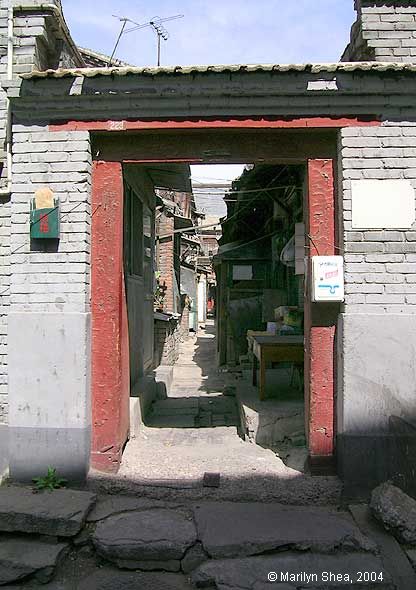 |
| Looking into the main door of this courtyard, you can see that it is filled with small structures. During the Cultural Revolution, the idea that a family would occupy a courtyard was considered counter-revolutionary. The committees would assign up to 20 families to a courtyard. Each family would have one room and additional rooms were built in the central gardens. As cooking space was needed, lean-tos were added in alleyways, against the inner walls of the courtyard, and in any other space possible. In some areas the population became so dense that the lean-tos were subsequently occupied as residences, as well.
The density of living has decreased since the Cultural Revolution. Some residents have been in the area for generations, but many left as Beijing began to grow and there were more opportunities. The government put no effort into maintaining the hutong. The people who live there rent from the local district. Any money they spend on the property is useless unless they have a business. The interiors of many of the residences have a completely different face. Notice the television antennae peaking above the rooftops. The insides of the houses are neat and clean, and make the most use of their space. Again, cooking is done in lean-tos to keep the grease of stir frying out of the house. The hutongs have electricity and phone lines. In the 1990s there would be one phone at the local convenience store, but quickly just about everyone had phone lines. Those have been supplanted by cell phones. The one thing the government failed to do was add sewer lines and modern piping. Most people have limited running water for cooking and cleaning but go down the street for showers and toilets. |
http://hua.umf.maine.edu/China/HistoricBeijing/Qianmen/index.html
Last
update: August 2009
© Marilyn Shea, 2009